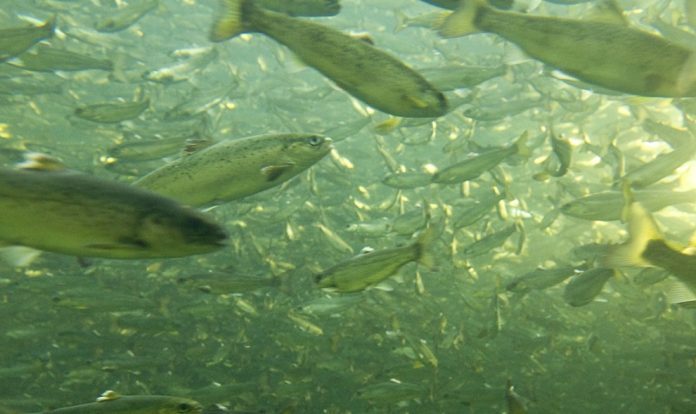Atlantic salmon use magnetic fields to navigate, even when landlocked for generations, raising questions over escaped fish.
Academics have tested a hypothesis that a “magnetic map” (i.e., an ability to extract positional information from Earth’s magnetic field) also exists in farmed salmon populations that do not partake in oceanic migrations.
The findings published in PNAS (Proceedings of the National Academy of Sciences Of the United States of America) on Monday raise questions about escaped fish who have greater potential to successfully navigate than previously thought. However they may also invade more habitats than previously suspected.
Magnetic fields
The study found that Atlantic salmon can sense magnetic fields and use them to navigate, even when enclosed or landlocked for multiple generations.
A 2014 study by Oregon State University researchers demonsrated that Pacific salmon use the magnetic field to orient themselves as they migrate over thousands of miles through the Pacific Ocean to target their oceanic foraging grounds
The study wanted to know if nonanadromous farmed Atlantic salmon can extract map information could do the same. researchers made a apparatus at the Oregon Hatchery Research Center with several “arenas” surrounded by wooden coils wrapped in copper wire to mimic Earth’s magnetic field, and then tested 1,150 juvenile Atlantic salmon transported from Oregon’s Hosmer Lake.
Course-correct
“We wanted to see how Atlantic salmon would respond if we put them into different magnetic fields at the boundaries of Pacific salmon oceanic range,” Michelle Scanlan, research scientist at Oregon State University, said in a news release. “If we put them into an extreme northern field, would they ‘course-correct’ and align themselves in a southerly direction, and vice-versa? And the answer was yes. They clearly aligned themselves in the tank to adjust to an appropriate magnetic field signal.”
Atlantic salmon are routinely bred on fish farms. Study authors surmise farmed fish could use their navigational abilities to explore and invade new territories if they were to escape their confines.
On a broad scale, however, the use of the magnetic field explains, in part, how salmon can find the way to their river of origin.
“The magnetic field is kind of like having a GPS system in your car,” said Amanda Pollock, a graduate student in OSU’s Department of Fisheries and Wildlife and co-author on the study. “That gets them close to their river and then their olfactory senses kick in.”
Use it or lose it
Cooke Aquaculture’s Atlantic salmon fish farm off Cypress Island failed last August, releasing roughly 100,000 fish into Puget Sound. Eight months later one was caught 40 miles upriver.
“Why didn’t the Hosmer Lake fish lose their ability to navigate?” Putman said. “It apparently isn’t a ‘use it or lose it’ skill. It may be possible that they have some finer-scale navigation tools at their disposal to use in a lake. Even at small-scales, fish are confronted by a variety of spatial tasks that might benefit from use of magnetic cues — from traveling in a straight line to maneuvering through the water column. More research is needed to answer those questions.










